The keynote for ICCC (by Emily Short) starts at 11am EDT/9 MDT. The ProcJam talk is scheduled to follow at 1:30 EDT/11:30 MDT.
June 30, 2015
International Computational Creativity Conference is going on right now, and being livestreamed. (Join the livechat on YouTube)
Here’s yesterday’s talks:
Most importantly for us around here, tomorrow morning (11:30 Mountain Time) Michael Cook is going to be talking about ProcJam and making an announcement about ProcJam 2015.
June 30, 2015
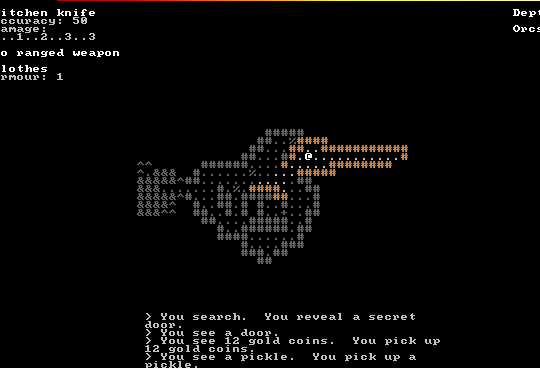
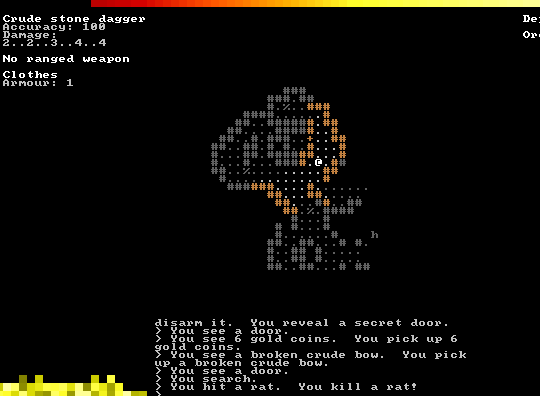
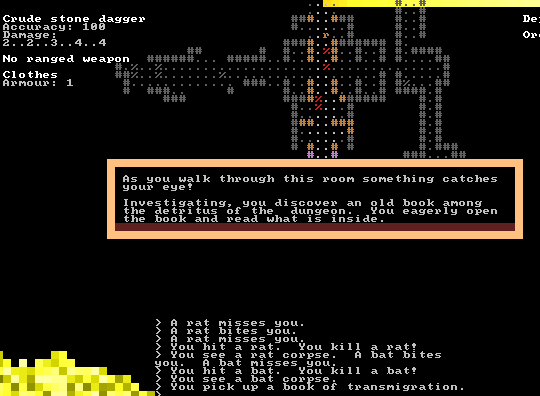
Vicious Orcs (2011)
Jeff Lait is a frequent participant in the 7 Day Roguelike Challenge, often putting his own spin on basic roguelike mechanics. Vicious Orcs is no exception. The first unique feature you’ll notice is that the maps are apparently portal-based rather than existing in absolute space; the various rooms are linked together in non-euclidian ways, sometimes twisting and turning back on itself. The result feels somewhere between the chaotic slopes of a real cave and the otherworldly magic the detailed descriptions in the game invoke.
It’s worth thinking about other ways to assemble generated content; grid-based landscapes are common, but simple tweaks can entirely change the context for what might otherwise be a straightforward generator.
June 29, 2015
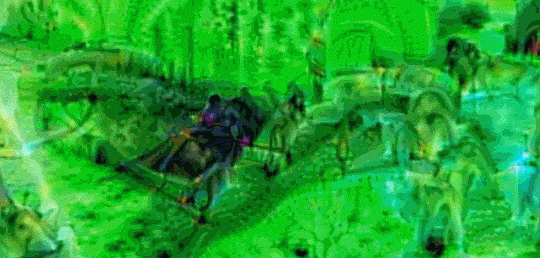
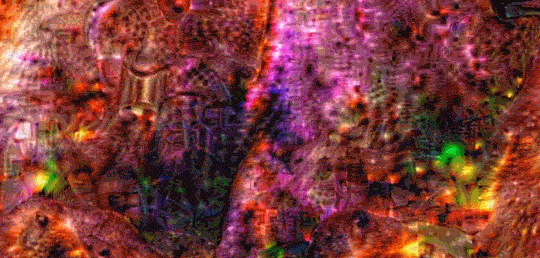
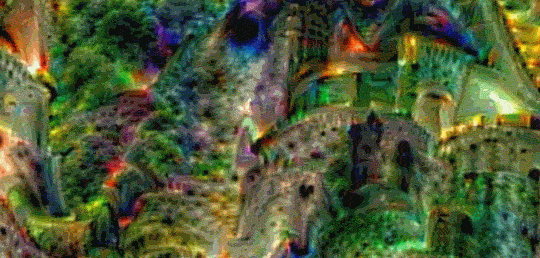
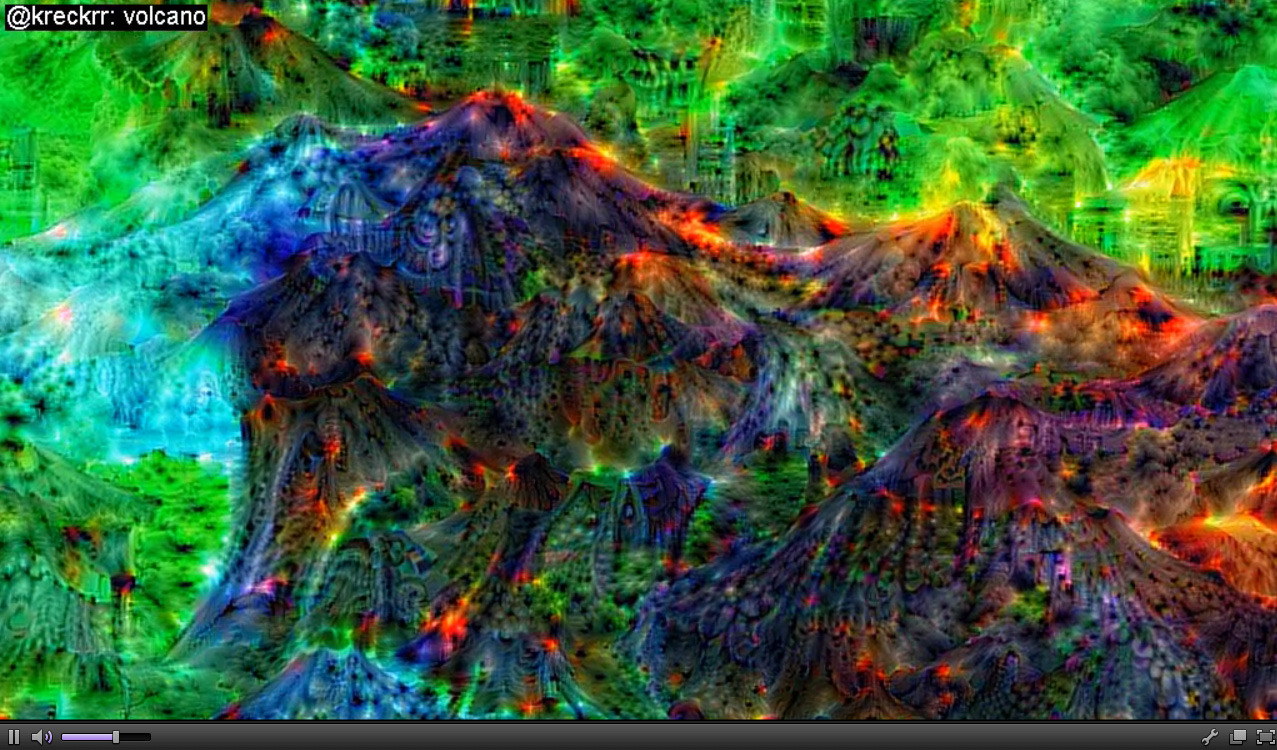
Twitch Plays AI / Interactive Neural Network
No doubt you’ve seen Google’s image recognition artificial neural networks being turned around and used to generate inceptionism images. Neural Networks have been in the news for generation lately: remember those Magic: the Gathering Cards?
Well, some Belgian PhD students hooked up a dreaming neural network to a Twitch chat stream and have a live broadcast of what the AI finds. It switches what it’s looking for based on what people mention in the chat stream. Above you can see some dogsleds, castles, and volcanos, and other things.
Jonas Degreve, who I gather did most of the work, has a blog post explaining the technical details.
June 28, 2015
Procedural Generation of Sokoban Levels
Here’s another approach to puzzle generation. A mechanical rather than narrative puzzle, to draw a distinction, operating in space rather than in logical connections between symbolic objects.
Sokoban and sokoban-like puzzles tend to crop up in other games that deal with space and movement on a grid. Nethack even has some special Sokoban levels. Being able to generate these kinds of puzzles procedurally could let us incorporate them into larger puzzle systems, allowing for greater variety.
i was surprised that the video didnt mention Yoshio Murase’s set of small automatically generated levels that’s in practically every incarnation of sokoban out there, but it’s there in the paper
i was especially surprised since that set of levels had a paper too
Good point. (And commendations on having the links handy!)
June 26, 2015
Catacomb Kids is a platformer roguelike in Early Access that looks like it is shaping up nicely, but I want to highlight this talk that Tyriq Plummer gave at GDC 2015, looking at how the map generator works. It is a useful look at some of the practical decisions that go into building a procedural map generator.
One thing that stood out to me is that the generator has the self-imposed constraint that the level is indestructible. Instead of using the approach of Spelunky, Minecraft, or Crypt of the Necrodancer, where the destructibility of the terrain lets the player edit the map to overcome limitations in the generator, Catacomb Kids deliberately operates in hard mode. Undoubtedly, this made it harder to develop, but combined with the other constraints it helps give the game its own unique feel.
Another thing that stood out was that adding simple spaces to give the player breathing room was important to the pacing of the level. A good generator usually has multiple textures, and sometimes adding a simple, empty room can give the rest of the complex space the context it needs.
The bit at the end about turning the quirks of the generator into features is the kind of thing that grabs me personally, because I’m a huge advocate for exploring the inner workings of algorithms. Design is a conversation between the designer, the machine, and the player. Seeing the odd outcomes repurposed for new mechanics is exactly what can happen when you really engage with what the machine is telling you.
June 25, 2015
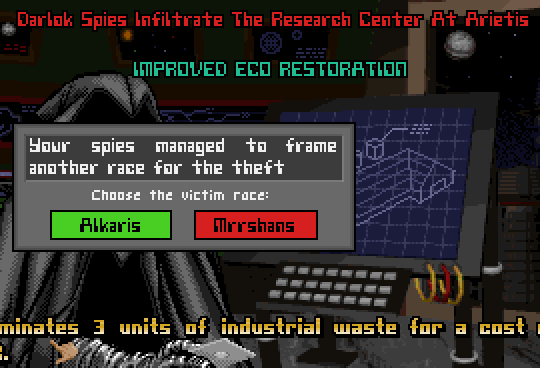

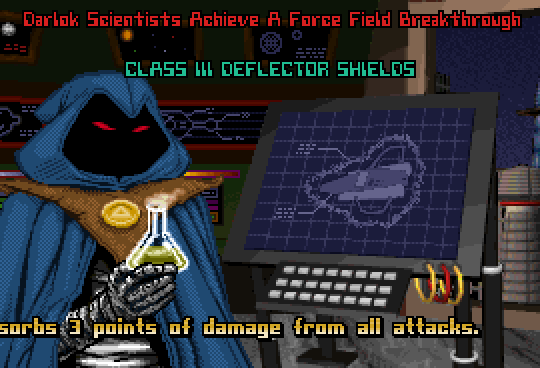
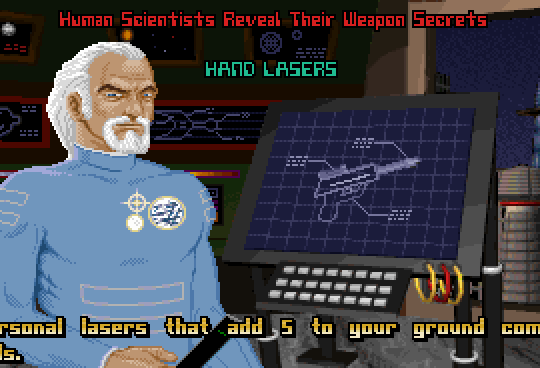
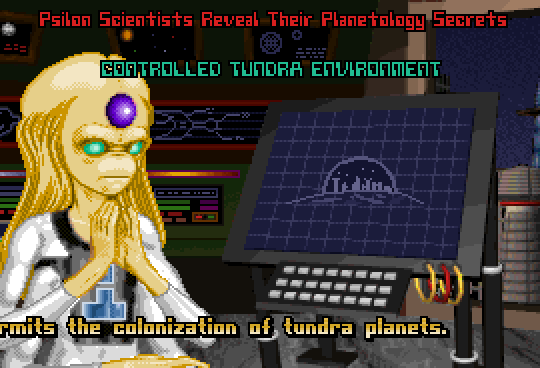
Master of Orion (1993)
While the game does feature a randomly generated star map, the more unique feature in Master of Orion is the randomly shuffled technology tree. The game has a list of hundreds of technologies, divided into six areas and ranked from 1 to 50. Of these, each player in a given game will only be able to research about half. Your rivals, of course, have a different selection of techs, so you can trade, conqueror, or steal to gain some of the technologies you lack.
While some critical technologies are guaranteed to be included, you can never be completely certain which technologies will be available this game, or even which ones will be easily accessible. Introducing a scarcity like this adds to the texture of the game. Randomly removing content can be just as interesting as adding content.
June 24, 2015
cinema 4d noise survey //
visualization of all 32 types of 3d noise in Cinema 4D. 1080p.
This is a neat visualization of different types of noise. Making one of these for your software or library sounds like a useful reference project.
June 23, 2015
This is part 01 of three part series for procedural modeling of simple system that generates voronoi like table.
Software used: Rhinoceros 5, Grasshopper 3D and Kangaroo, Python with Rhinoscriptsyntax API.
In this part we made basic system and form.
In second tutorial idea is to develop system for attaching glass panel plane with all support elements, of course procedurally in Grasshopper 3D.
Third part will bring LSR (light / shade / rendering) in Maya and Renderman 19 with RIS engine and tweaks of beauty pass in Photoshop and post production.Few Hres screenshots:
https://www.flickr.com/photos/marko_lost/sets/72157649436662518
and this link:
https://www.flickr.com/photos/marko_lost/sets/72157654614576096
This is a cool project (and a tutorial). The artist has also done some other procedural work (some of which I’ve linked before). I like this pin table effect.
June 22, 2015
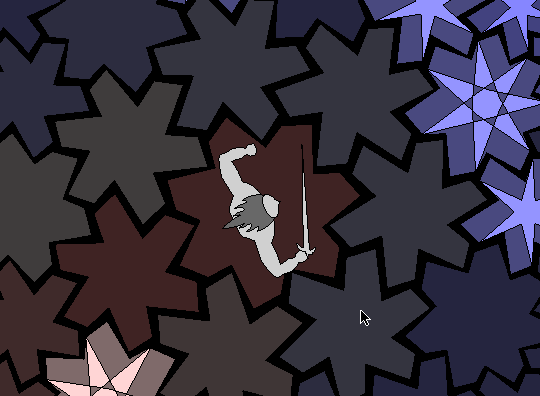


HyperRogue
Procedural generation doesn’t have to be restricted to grids. HyperRogue is a roguelike that takes place in an infinite hyperbolic plane, where the angles of triangles add up to less than 180 degrees.
